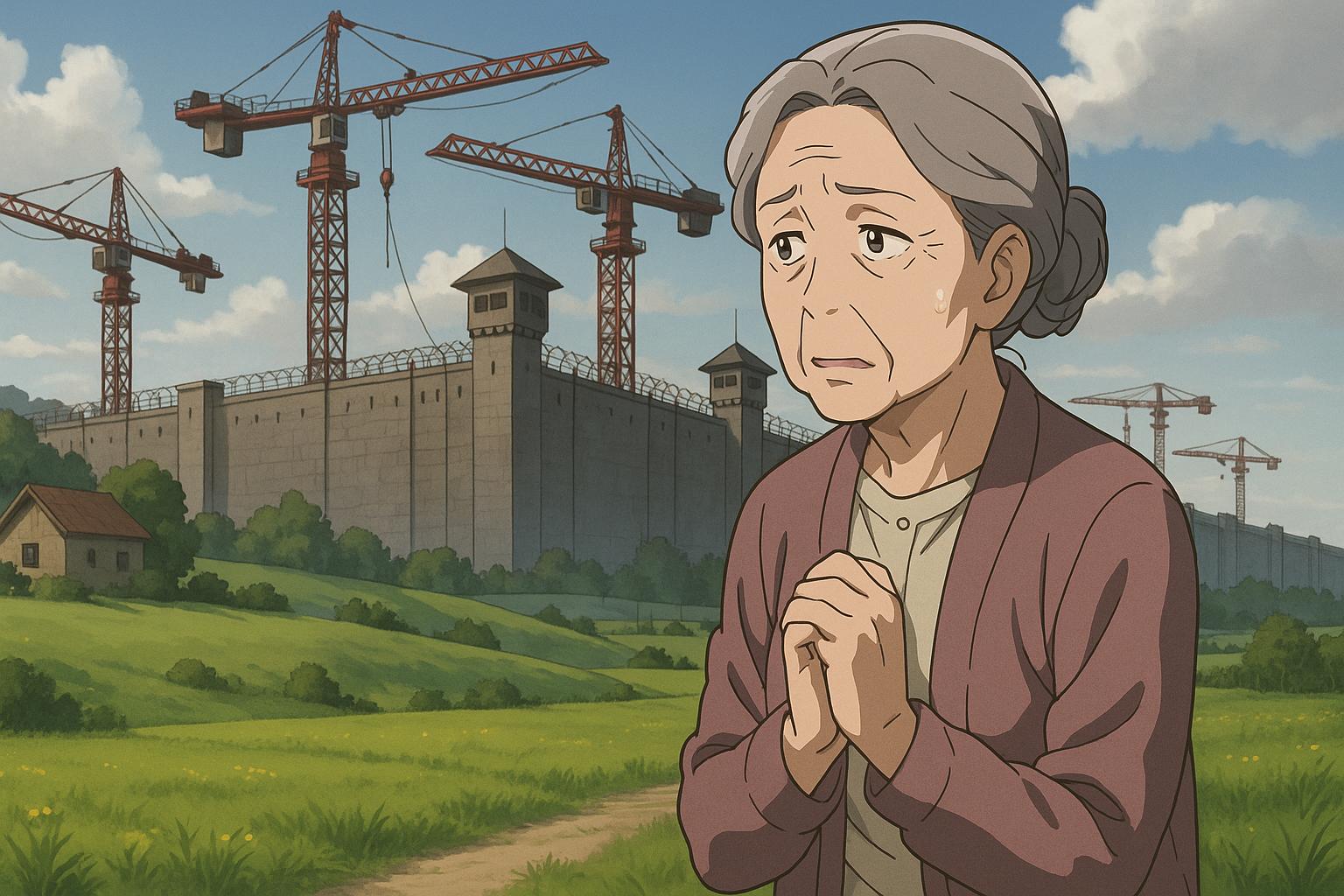Villagers near the sites of two upcoming "super prisons" are voicing their concerns, claiming the developments are being hastily pushed through by the government, with significant impacts on their lives and properties. Justice Secretary Shabana Mahmood has announced plans to invest £4.7 billion in constructing three new jails, aimed at creating 14,000 new prison places by 2031. However, local residents argue that their objections and concerns are being overshadowed by the urgency to alleviate the growing prison population crisis.
One of the proposed prisons, set to be built on green belt land near HMP Wymott and HMP Garth in Chorley, Lancashire, has raised alarms among residents already grappling with issues stemming from existing facilities, including drug-carrying drones disrupting their daily lives. Meanwhile, construction is set to commence at a second site near HMP Gartree in Leicestershire, where previous planning refusals were overturned by former Secretary of State Michael Gove.
Despite assurances from officials that the new prisons will generate approximately 600 jobs and boost the local economy, residents describe feeling "railroaded" into accepting the projects. Margaret Coy, aged 73, who enjoyed riding along what was once a tranquil bridleway, lamented the loss of access to the land now overrun by construction vehicles. As the 73-year-old reflected, “It’s obviously been pushed through, so we haven’t really got a say in it.”
Similar sentiments echoed from Jo, a district councillor who has lived in the area for a decade. Having initially participated in an action group against the new prison, Jo noted how the appeal process seemed to disregard local concerns, stating, “I feel like we've just been railroaded... now it's all diggers, it's horrendous."
Local fears extend beyond the immediate disruption of construction. Residents are apprehensive about the increased prison population that will effectively triple the number of inmates in the vicinity, raising safety and crime concerns. Jo articulated her worries about the potential for violence and increased drug trafficking, stating that the Ministry of Justice (MoJ) “aren't the greatest neighbours."
The pattern of the government overruling local planning decisions has been observed not only in Leicestershire but also in Chorley, where a similar situation has unfolded. After the planning inspectorate originally rejected the proposal for a new prison, housing minister Angela Rayner intervened, leading to plans for a 1,700-capacity facility alongside the existing jails.
As these developments unfold, questions regarding the capacity of local infrastructure remain prominent. Residents highlight the inadequacy of transport links and local amenities to accommodate the influx of new prison staff and the increased traffic likely to result from construction and operation. Diana Cook, a parish councillor, remarked that while the need for prisons is understood, the chosen locations are questionable.
Furthermore, while expansion efforts aim to address prison overcrowding, the challenges associated with such strategies remain formidable. Reports indicate that the English prison system currently faces escalating overcrowding, with over 87,000 prisoners occupying facilities designed for significantly fewer. Critically, the National Audit Office has raised alarms that the government's plans are inadequate, predicting a shortfall of around 12,400 places by 2027.
Efforts to address the prison capacity challenges extend beyond simply constructing new facilities. The Justice Secretary recently introduced measures aimed at streamlining the recall process for released prisoners, although these have drawn criticism from victim advocacy groups concerned about public safety. Mahmood’s approach embodies a broader struggle within the UK's criminal justice system, encapsulated by the balance between expanding capacity and implementing effective rehabilitation measures.
In the face of this ongoing crisis, the voices of local communities intertwined with the complexities of government policy signal that the path forward remains fraught with challenges, necessitating careful consideration of local impact and infrastructure needs as the UK continues to navigate its prison population crisis.
Reference Map
- Paragraphs 1, 2, 3, 4, 5, 6
- Paragraphs 1, 2, 4, 5
- Paragraphs 4, 5
- Paragraphs 2, 3
- Paragraphs 1, 2
- Paragraphs 1, 4
- Paragraphs 2, 3
Source: Noah Wire Services
